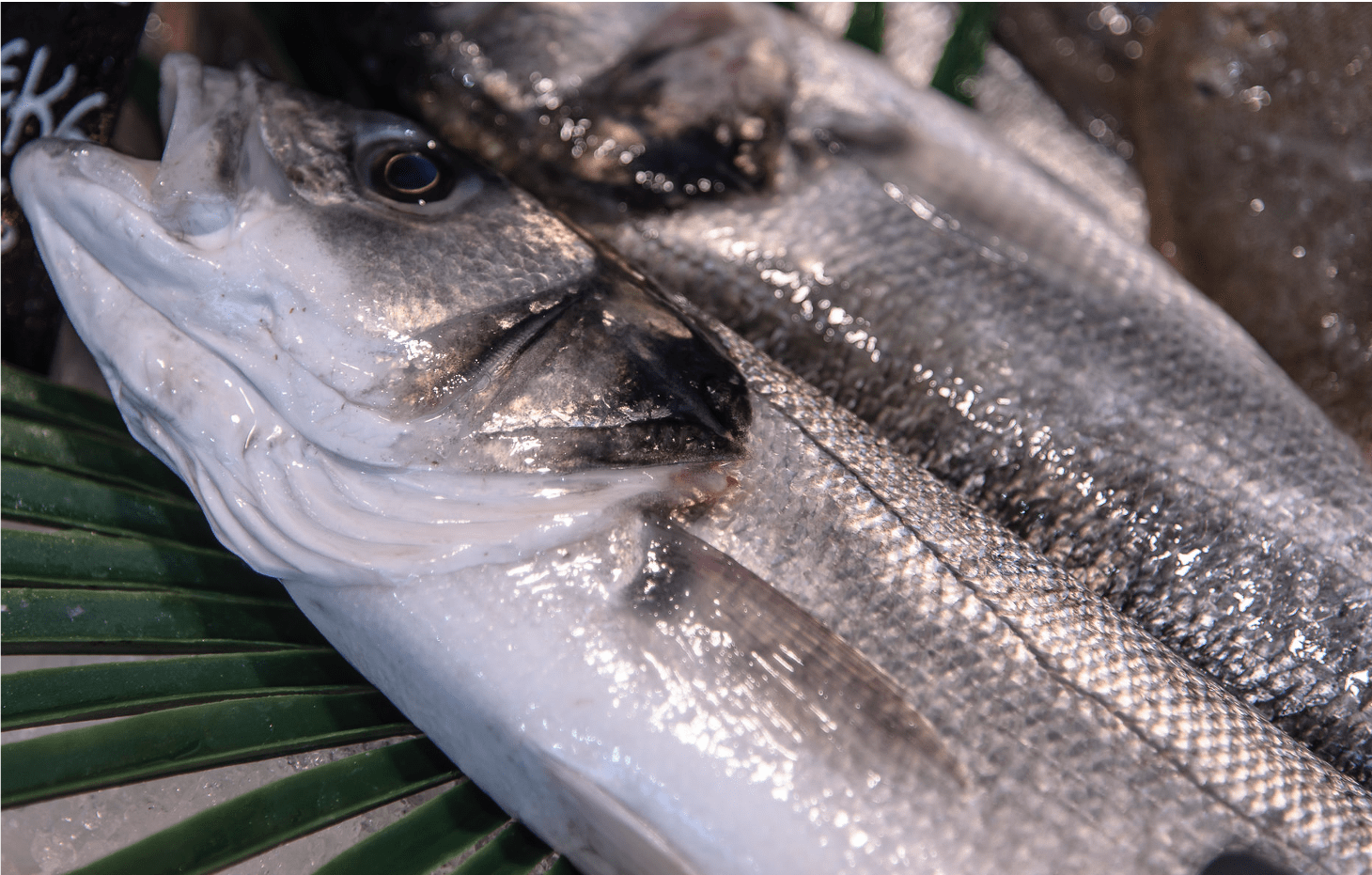
SEA BASS (WOLF FISH)
This round fish has numerous different names: it is called sea bass when caught in the Atlantic Ocean, and wolf fish in the Mediterranean The wolf reference comes from its voraciousness. In fact, the sea bass swims along with its mouth open and gorges on anything that ends up between its jaws which isn’t plankton: sardines, anchovies, young mullets, newly hatched eels (glass eels), squids, small crabs, shrimps and any crustaceans it comes across, in short, anything smaller than it.
Sea bass are rather solitary fish as adults while the young live in shoals. These can be whipped up into a ferocious feeding frenzy; they make the sea appear to boil, stunning other fish with their tails, the better to feed on them. In the summer, sea bass favour rocky coastlines and beaches with crashing waves. Here, they are line caught by anglers. Professionals fish for sea bass offshore, using lines or nets.
Buying it
Wherever it comes from, a sea bass must be fresh, that is to say, it must meet all the criteria for freshness: bright eyes, shiny scales, red gills, smelling of the sea. Sea bass are sold whole and gutted, fresh or frozen, or as fillets, portioned or otherwise, fresh, vacuum-packed or frozen. Whole fresh fish are gutted on-board the fishing boats and then packed into polystyrene crates and covered with a layer of ice so as to maintain a temperature of between 0 and 2°C until they are delivered.
Preparation
A whole sea bass, fresh or thawed, must be scaled (unless it is to be cooked in a salt crust), and then rinsed and dried. When filleting, it is important to be sure to remove all the red and bloody parts between the skin and the flesh, which are usually “ferrous” and tarnish when cooked.
Cooking
Sea bass can be baked with aromatics, poached or braised. A 1kg sea bass is sufficient to serve four people. Small farmed sea bass can be steamed or cooked in paper parcels (“en papillote”). Sea bass fillets are pan-fried. The fillets are taken from a 3 to 4kg fish, so as to obtain thick, plump fillets and to ensure that cooking is as even as possible.
Use
Sea bass fillets can be prepared raw, as a carpaccio or tartare. In Japan, they are served as sushi. If cooked, they are braised, grilled or roasted.
Storage
Fresh whole sea bass should be stored in a cold room or refrigerator for no more than a few hours after delivery, in the ice from the crate. Vacuum-packed fresh fillets display a UBD (use-by date). Frozen whole or filleted sea bass should be kept in the freezer from delivery until it is used.
Nutritional value
Sea bass is categorised as a semi-oily fish but it contains less than 5% fat. This is primarily made up of omega-3-rich unsaturated fatty acids which are beneficial for all cells, particularly those of the nervous system. Rich in proteins, it also contains mineral salts (iron in particular) and B vitamins.
Varieties
- Line-caught sea bass: As the name suggests, this is caught by line (rod, troll-line or long-line) from small boats under 12 metres in length. It is subject to eco-labelling. Landed on the boat live, the fish is identified by a label attached to the gill, indicating its provenance and the number of the boat. This is the best variety. To conserve stocks of this species, Breton fishermen stop catching it from late January until late March, the breeding period.
- Trawled sea bass: Caught with nets on the high sea, it is highly likely that they will be crushed and die in the nets. This means the flesh is of lesser quality. Whatever the fishing method used, the legal catch size is 36cm in the Atlantic, the North Sea and the Channel, and 25cm in the Mediterranean.
- Farmed sea bass: The common sea bass is produced in marine fish farms (in Greece, Turkey, Spain, Italy, France and Croatia), more or less intensively. The fish are graded and weigh between 350 and 500g. Their flesh is less fine and has a higher fat content. There are some organic fish farms.
A Label Rouge (red label quality label) identifies sea bass farmed in the sea in good conditions without overcrowding, and fed on a fish diet.
Flavour pairings
– Green olive
– Spring onion
– Citrus fruits
– Artichoke
– Turnip
– Foie gras